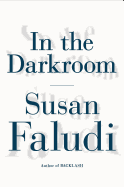
In 2004, photographer and Hungarian immigrant Stefánie (née Steven) Faludi announced via e-mail that she had undergone male-to-female gender reassignment surgery and requested that her daughter, journalist Susan Faludi (Backlash, Stiffed), document her story. Faludi consented with the intention of redressing a grievance against the "frustrated filmmaker who had spent most of his professional life working in darkrooms... a simultaneously inscrutable and volatile presence" who had abandoned the family during Faludi's teenage years.
Armed with memories of the rugged outdoorsman, Faludi flew to Hungary to confront "a phantom out of a remote past," an illusion fashioned in the darkroom. Faludi was engaged "in a [10-year] contest... between erasure and exposure, between the airbrush and the reporter's pad, between the master of masking and the apprentice who would unmask him." Stefánie now led a life crafted from 1950s female stereotypes, but she remained a figure of many contradictions: a Jew in denial, whose bravery during the Holocaust belied any indifference shown to her religion of birth; a parent disdainful of abandonment yet who abandoned her own family. Through Stefánie's experiences, Faludi explores the larger questions of transgender politics and sexual identity in a nation whose past has detrimentally shaped its present. In the process, the hard-nosed reporter and feminist is forced to reevaluate the identity she has built as retaliation against an abusive and domineering father.
In the Darkroom is an intensely personal journey for Faludi, and despite the intimate subject matter, she never loses her reportorial edge. Rather, her father's story prompts Faludi to reexamine and open up her own beliefs in feminism. --Nancy Powell, freelance writer and technical consultant

